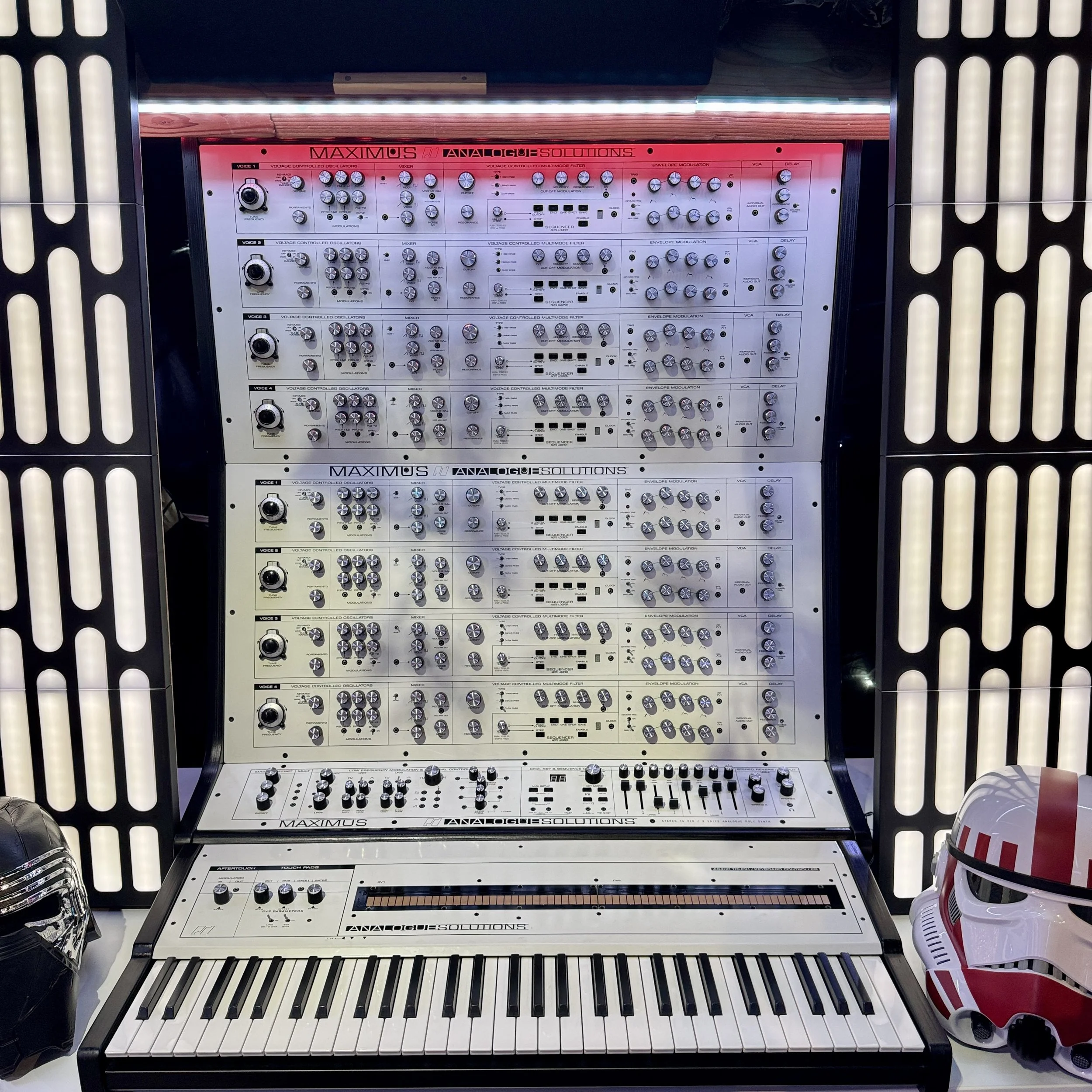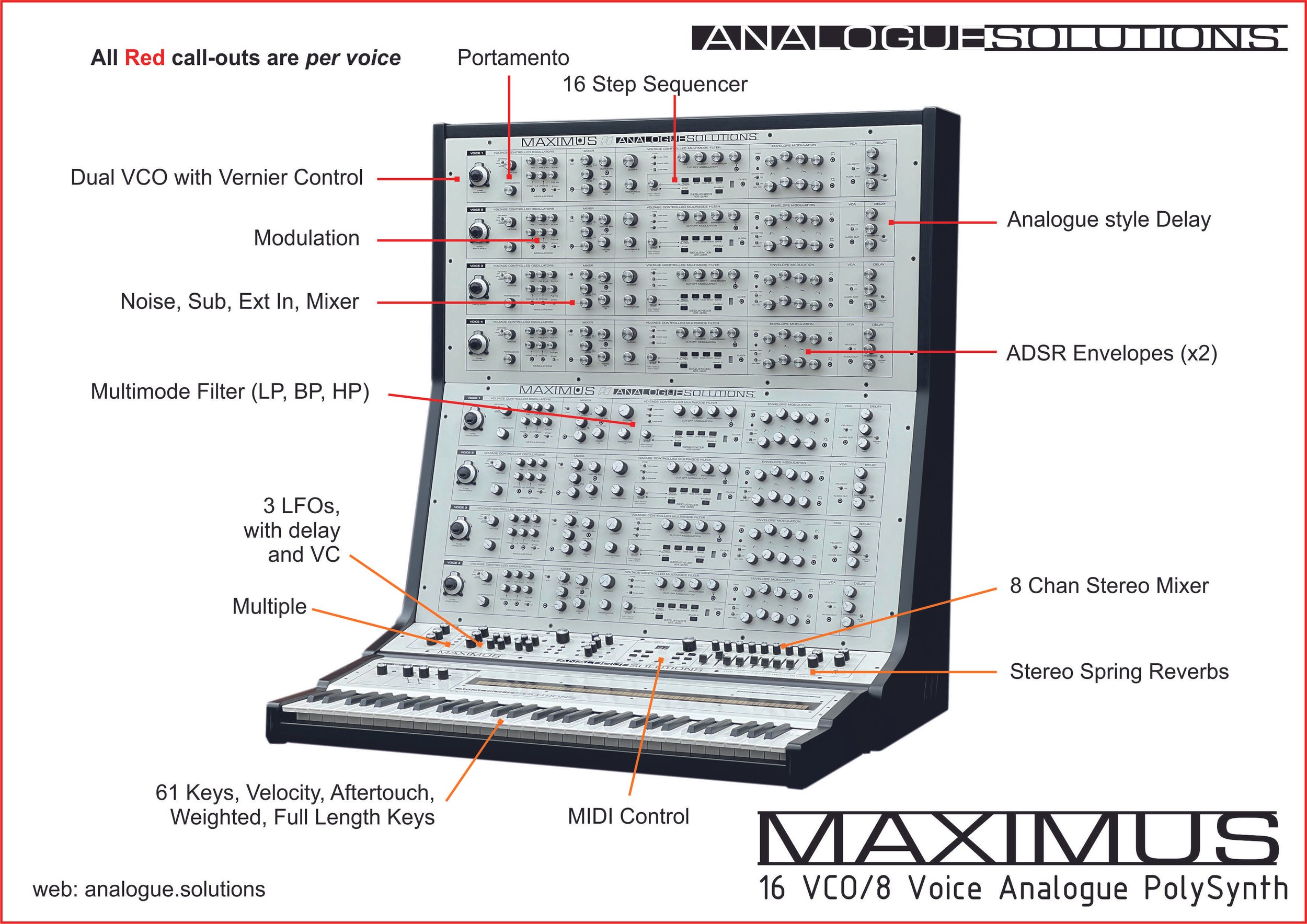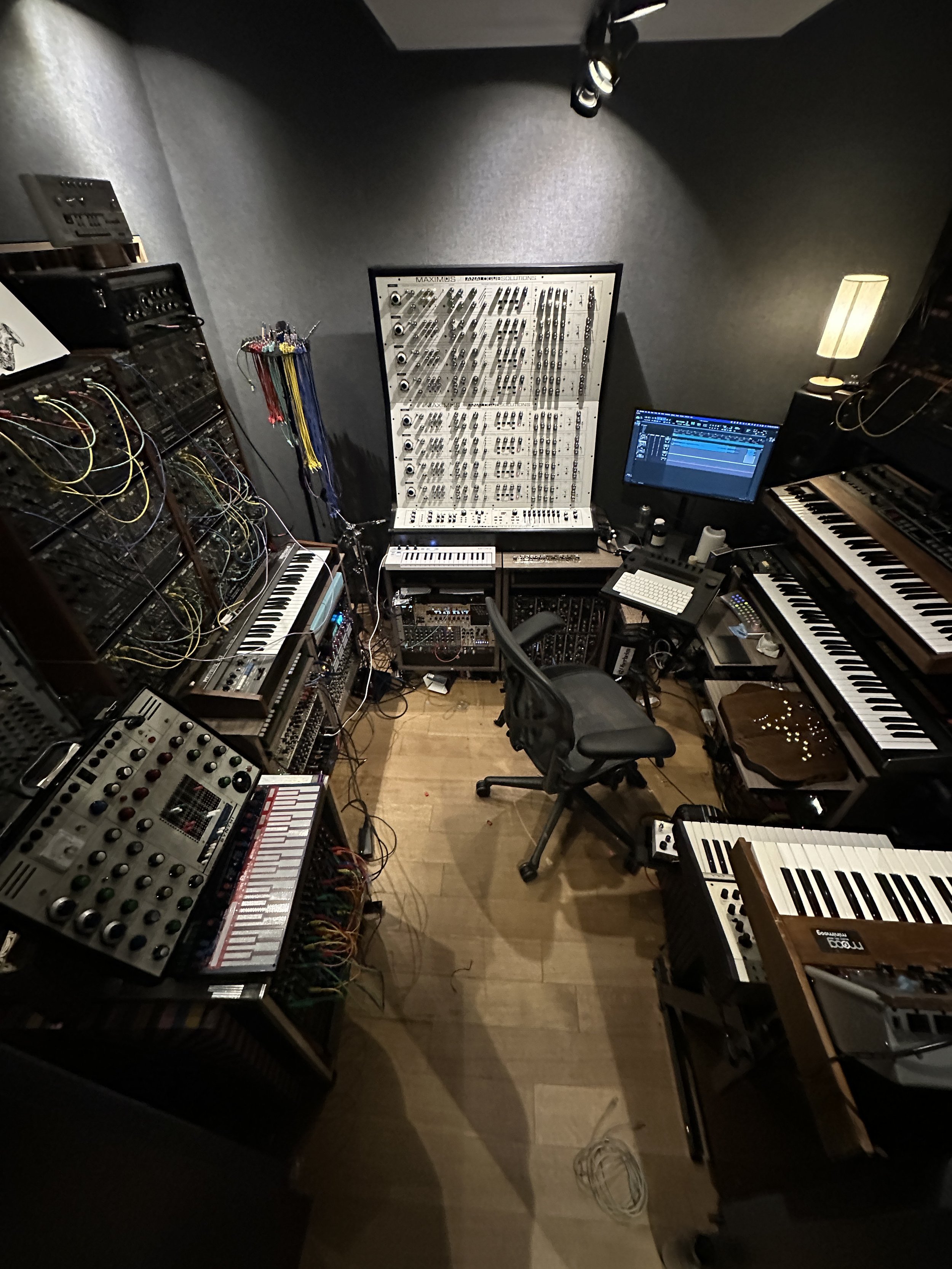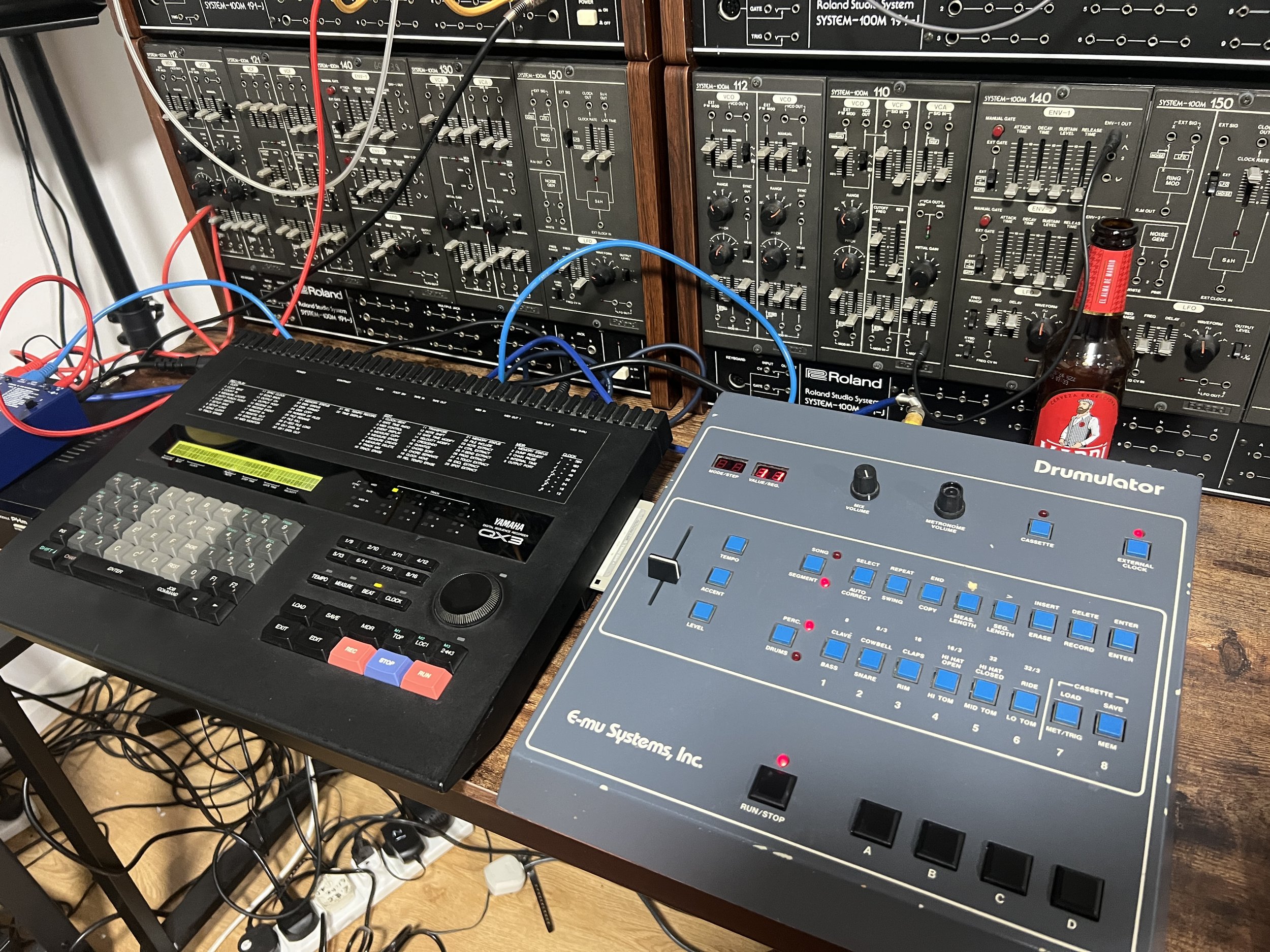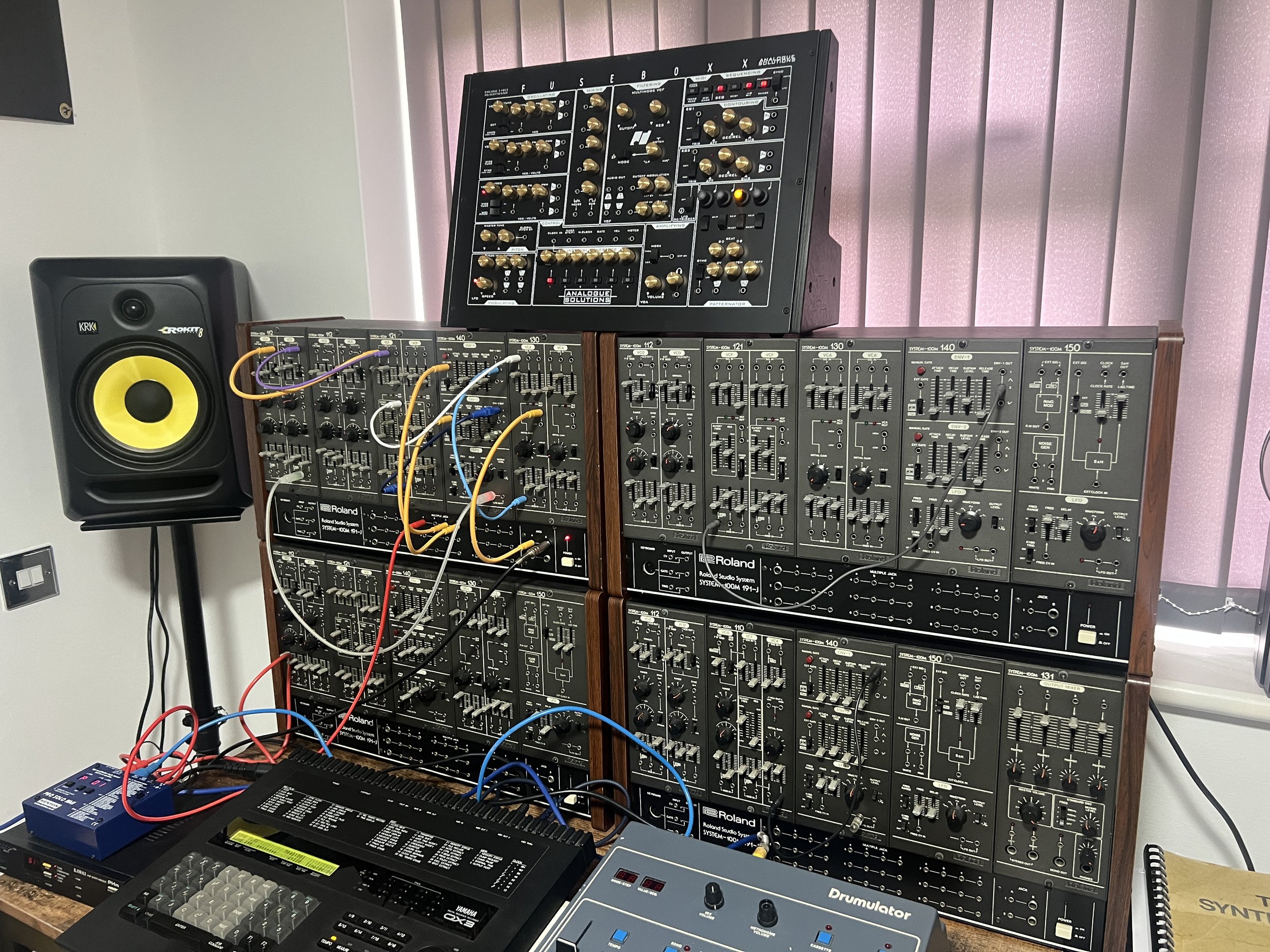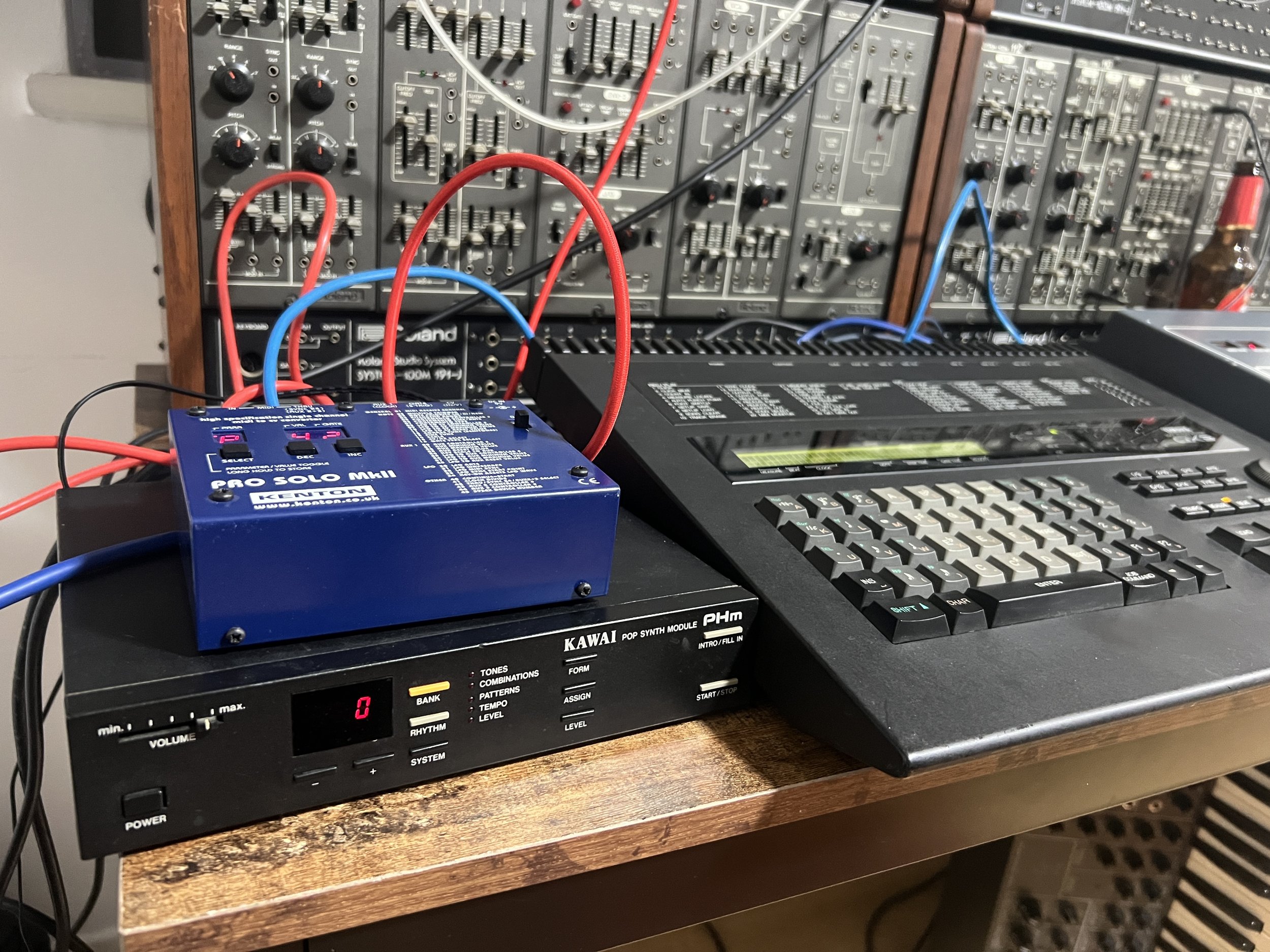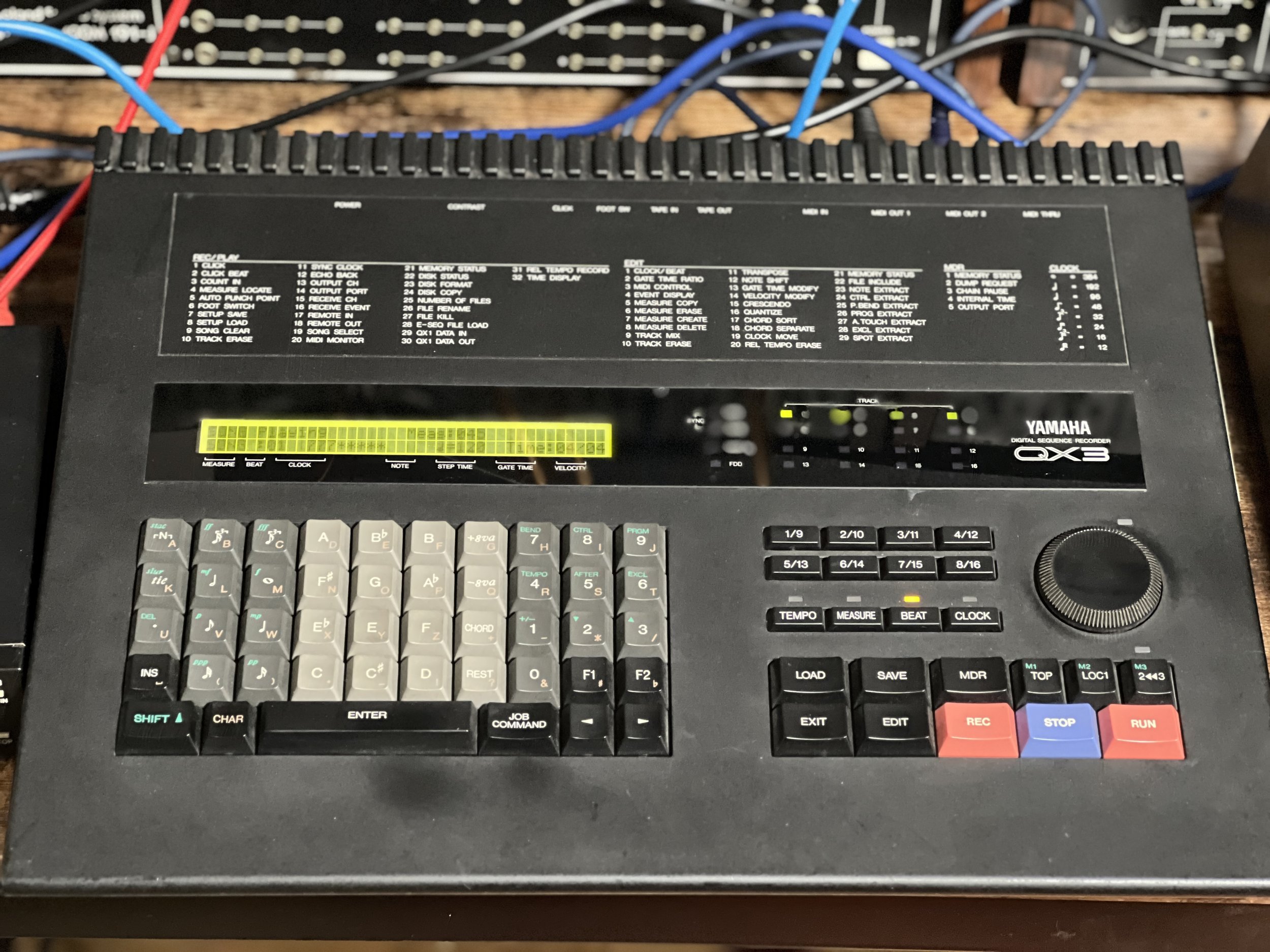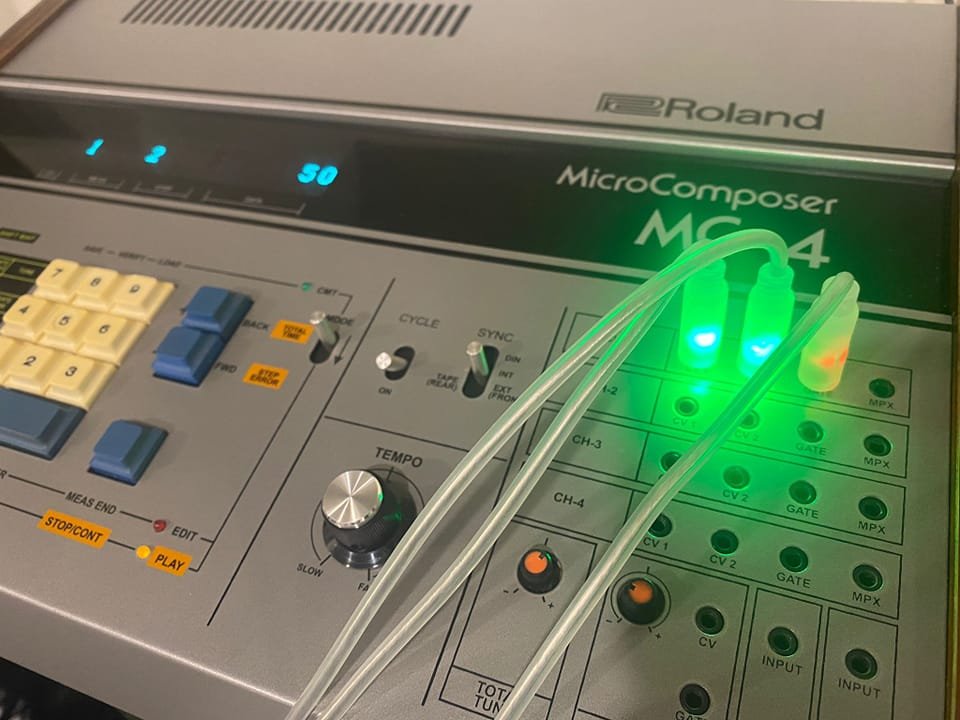Star Wars Maximus 8 voice!
Vocoders - A Brief History
The vocoder, short for “voice encoder,” has a fascinating history rooted in early telecommunications and wartime innovation, long before it became a staple of electronic music. It was developed in the 1930s by Homer Dudley at Bell Labs as a means to address a key problem of the time: the limited bandwidth of early telephone systems. Traditional telephone lines had difficulty transmitting the full spectrum of human speech clearly, which often resulted in distorted or muffled audio. Dudley’s invention aimed to overcome this limitation by analyzing speech and breaking it down into its essential spectral components. The vocoder worked by splitting the voice signal into multiple frequency bands, extracting the envelope of each band, and then transmitting only this simplified data. At the receiving end, a synthesizer could reconstruct the voice using these envelopes, dramatically reducing the amount of data needed to send intelligible speech.
This ability to compress speech signals found a highly secretive but vital application during World War II. The vocoder was a core component of SIGSALY, an encrypted voice communication system developed by Bell Labs for the Allied forces. SIGSALY allowed for secure, real-time conversations between high-level leaders, most famously Winston Churchill and Franklin D. Roosevelt. The system was so advanced for its time that it used vinyl records to generate synchronized noise for encryption, and it required massive rooms full of equipment. Despite its complexity, SIGSALY was a groundbreaking step in secure digital communications and marked one of the earliest uses of speech encryption and signal processing.
After the war, vocoder technology gradually made its way into civilian and creative domains. By the 1960s and ’70s, musicians and engineers began to experiment with vocoders as sound design tools. Artists like Wendy Carlos and Kraftwerk saw its potential not just as a communications aid but as a way to merge human expression with the synthetic possibilities of electronic music. The vocoder’s robotic, otherworldly sound became iconic, particularly in genres like synth-pop, funk, and later electronic dance music. In the decades that followed, acts such as Herbie Hancock, Afrika Bambaataa, and Daft Punk helped cement the vocoder’s place in musical history.
Today, vocoders continue to be used in both music and speech processing, blending technology with artistry. What began as a solution to a technical limitation evolved into a cultural icon—proof of how innovation can leap from necessity to creativity.
Fusebox X and AS500-seq, with Moog Prodigy
Roland System 700
The Roland System 700: A Modular Synth Icon
The Roland System 700, released in 1976, holds a legendary status among synthesizer enthusiasts and music producers. As Roland's flagship modular synthesizer, it was a bold statement of engineering and musical innovation, representing the company’s foray into professional-grade sound synthesis. Its modular nature and unparalleled sound quality made it a centerpiece for experimental music, film scoring, and electronic music production in the late 1970s and early 1980s.
Design and Construction
The Roland System 700 was designed to rival the high-end modular systems of the era, such as the Moog and ARP systems. However, Roland brought its own distinct approach, emphasizing precision, musicality, and integration. The System 700 was a massive and visually striking instrument, comprising various modular cabinets that could be configured to suit the user’s needs. The full system was typically divided into three main components:
Main Console (Lab Series): This housed oscillators, filters, envelope generators, and VCAs—core modules for sound generation and shaping.
Expander Cabinet: Additional modules, such as sequencers, mixers, and specialized signal processors, for extending the sonic possibilities.
Keyboard Unit: A dedicated keyboard with performance controls, offering dynamic interaction with the modular system.
The build quality of the System 700 was exceptional, with rugged metal chassis and high-quality knobs and jacks designed for intensive use in professional studios.
Sound Architecture
The System 700 was designed for sonic exploration, boasting a wide array of modules, each meticulously crafted for versatility and clarity. Key features included:
VCOs (Voltage-Controlled Oscillators): The System 700’s oscillators were known for their stability and wide frequency range. They offered multiple waveforms, including sine, triangle, square, and sawtooth, making them a versatile foundation for sound design.
VCFs (Voltage-Controlled Filters): The system included low-pass and high-pass filters, which could sculpt tones with precision. The filters were renowned for their warm and musical character, a signature of Roland’s analog designs.
Envelope Generators and VCAs: These modules provided dynamic shaping and amplitude control, enabling users to create anything from percussive plucks to evolving drones.
Step Sequencer: The sequencer module allowed users to create complex, rhythmically synchronized patterns, making it an excellent tool for early electronic and experimental music.
Applications and Legacy
The Roland System 700 was a favorite among serious composers and producers who required a flexible and powerful synthesis platform. It was particularly popular in academic and experimental music circles, as well as in film scoring. Its versatility and rich sound found a place in iconic soundtracks and experimental recordings of the time.
Despite its acclaim, the System 700’s high price and large physical footprint limited its accessibility to only well-funded studios and institutions. As a result, only a small number of units were produced, making it a rare and sought-after collector’s item today.
Influence on Modern Synthesis
The System 700’s legacy lives on in Roland’s subsequent designs and the broader modular synthesizer community. Its influence can be seen in Roland’s System 100m and, more recently, in their digital offerings, such as the System-1 and System-8, which emulate classic Roland synths. The resurgence of modular synthesis in recent years has also sparked renewed interest in instruments like the System 700, inspiring a new generation of musicians and synthesists to explore modular sound design.
new Synth TC5000 - available to pre-order
new Synth TC5000 - available to pre-order-
shipping early Jan/2025
Inspired by the classic ARP2500 - the TC5000 brings this synth into the modern era whilst retaining it’s pure analogue routes and classic UI of a very large matrix panel!
SynthFest 2024
SynthFest 2024
5 OCTOBER 2024 - THE OCTAGON, SHEFFIELD, UK
As usual Analogue Solutions will be there with the biggest and best synths.
We will bring something new - which stand? Well, you won’t miss us, our synths make statements.
AS500-SEQ sequencer - new CV sequencer
NEW ANALOGUE SEQUENCER!!
Almost identical re-boot of our legendary Megacity sequencer.
Smaller form factor
Desktop design
Some general over enhancements, internal improvements.
Note: This version is pure analogue and does not feature a quantiser or MIDI.
Standalone 64 step analogue step sequencer with a host of unique features that sets it apart from others
AS500-Seq Key Features
True analogue step sequencers using CV pot’s not encoders.
Analogue CV circuits.
Hand built in Great Britain.
Massive 64 steps (series mode) or 2 x 32 steps (2 channel parallel mode)
2 CV outputs with Range and Glide (Portamento)
4 Gate outs (2 per channel)
Jump and Reset – activate from MIDI note, Push Button and external Gate
Fill In and clock divide modes for variation
Compatible with Eurorack and most analogue synths with CV/Gate input
Voltage controlled clock
Many options for sequence control
Solid steel and aluminium construction
High quality sealed potentiometers, sturdy switches.
Unique LED matrix style tear drop raining LEDs
A brief history of Alan R Perlman
Alan R. Perlman, known for his significant contributions to the development of synthesizers, played a pivotal role in shaping the landscape of electronic music. Perlman's journey in the realm of synthesizers began in the late 1960s when he co-founded ARP Instruments, Inc. (originally called Tonus, Inc.) in 1969. The company was named after his initials.
Before founding ARP Instruments, Perlman worked as an engineer at NASA and other institutions, gaining substantial expertise in electronics and engineering. His passion for music and electronics led him to the burgeoning field of electronic musical instruments, where he sought to create user-friendly and reliable synthesizers that could be accessible to musicians.
Under Perlman's technical leadership, ARP Instruments developed some of the most influential synthesizers of the 1970s. The ARP 2500, released in 1970, was their first product and one of the earliest modular synthesizers. Though it was not a commercial success, it showcased Perlman's innovative approach to design, emphasizing stability and ease of use.
The breakthrough came with the release of the ARP 2600 in 1971, a semi-modular synthesizer that became widely popular for its versatility and quality. The ARP 2600 featured pre-wired modules that could also be interconnected via patch cords, striking a balance between accessibility for beginners and flexibility for advanced users. This model became a staple in both educational settings and professional studios, used by artists like Stevie Wonder and Herbie Hancock.
Another landmark product was the ARP Odyssey, introduced in 1972, which provided a more affordable, portable, and performance-oriented alternative to the ARP 2600. The Odyssey was a duophonic synthesizer, allowing two notes to be played simultaneously, and it became one of the best-selling synthesizers of its time, used by a wide range of musicians including Elton John and Kraftwerk.
Despite the success of these products, ARP Instruments faced financial difficulties in the late 1970s, exacerbated by intense competition and internal management issues. The company's final major product, the ARP Chroma, was released just before it went bankrupt in 1981. The Chroma was notable for its polyphonic capabilities and advanced features, and it later influenced the design of subsequent synthesizers even after ARP's closure.
Alan R. Perlman's work with ARP Instruments left a lasting legacy in the world of electronic music. His innovative designs and commitment to making synthesizers more accessible and reliable paved the way for future developments in music technology. Today, ARP synthesizers are still revered by musicians and collectors, and Perlman's contributions are recognized as foundational to the evolution of electronic musical instruments.
Notable Synthesizers Developed by Alan R. Perlman
Alan R. Perlman's legacy in the synthesizer world is highlighted by several groundbreaking instruments that revolutionized electronic music. Each synthesizer he developed with ARP Instruments showcased his ingenuity and commitment to creating versatile, user-friendly, and high-quality electronic musical instruments.
ARP 2500
The ARP 2500, released in 1970, was the first synthesizer from ARP Instruments. As a modular synthesizer, it consisted of various modules that could be interconnected to create complex sounds. The ARP 2500 was unique for its matrix switch system, which provided a reliable and straightforward method for patching signals compared to the cumbersome patch cables used by its contemporaries. Although it was not a commercial success, it became known for its rich sound and was used by artists such as The Who and Jean Michel Jarre. The ARP 2500's precision and stability made it a favorite in academic and research settings.
ARP 2600
The ARP 2600, introduced in 1971, became one of the most iconic synthesizers ever made. This semi-modular synthesizer struck a perfect balance between flexibility and usability. Unlike the fully modular systems, the ARP 2600 featured internally pre-wired modules that could be used right out of the box, while still allowing for external patching to achieve more complex sounds. Its robust build and superior sound quality made it a favorite among musicians and sound designers. It was famously used in the soundtrack of the movie "Close Encounters of the Third Kind" and by artists such as Stevie Wonder, David Bowie, and Edgar Winter. The ARP 2600's design and functionality have influenced numerous modern synthesizers.
ARP Odyssey
Released in 1972, the ARP Odyssey was designed as a more affordable and portable alternative to the ARP 2600. This duophonic synthesizer allowed two notes to be played simultaneously, providing greater musical expression and performance flexibility. The Odyssey featured a straightforward interface, making it accessible to musicians who were new to synthesizers. Its compact size and rugged design made it popular for live performances. The Odyssey quickly gained a reputation for its distinctive sound and versatility, used by a wide range of artists including Herbie Hancock, Elton John, and Kraftwerk. The success of the Odyssey established ARP as a leading synthesizer manufacturer.
ARP Quadra
The ARP Quadra, released in 1978, was a sophisticated polysynth that combined several different synthesis techniques in one instrument. It featured sections for bass, strings, polyphonic, and lead synthesis, all of which could be played simultaneously. The Quadra was notable for its rich, layered sounds and performance-oriented features, such as a built-in arpeggiator and a variety of modulation options. While it was not as commercially successful as the Odyssey or the 2600, the Quadra showcased Perlman's continuous innovation and the advanced capabilities of ARP synthesizers.
ARP Chroma
The ARP Chroma, introduced in 1981, was the last major product released by ARP Instruments before the company went bankrupt. The Chroma was a sophisticated polyphonic synthesizer that offered extensive programmability and advanced features, such as velocity sensitivity and aftertouch, which were relatively rare at the time. It also featured a unique user interface with a touch-sensitive membrane panel for parameter editing. Although the Chroma did not achieve significant commercial success during ARP's existence, it was later appreciated for its advanced design and rich sound. After ARP's closure, the design was acquired by CBS Musical Instruments, and the Chroma continued to influence future synthesizer development.
Alan R. Perlman's work on these notable synthesizers cemented his place as a pioneer in electronic music. His designs not only set new standards for sound quality and usability but also inspired generations of musicians and engineers to explore the creative possibilities of electronic sound. Today, vintage ARP synthesizers remain highly sought after by collectors and musicians, and their timeless appeal is a testament to Perlman's enduring impact on the world of music technology.
Some History - Bob Moog
Bob Moog, born in 1934, was an American engineer and pioneer in electronic music. He is best known for inventing the Moog synthesizer, an instrument that revolutionized music production. Moog's journey into electronic music began in his teens when he built theremins from kits, an interest that led him to pursue electrical engineering at Columbia University and later a Ph.D. at Cornell.
In the 1960s, Moog started the R.A. Moog Company, initially producing theremins. His breakthrough came in 1964 with the development of the first Moog modular synthesizer, which featured voltage-controlled oscillators, filters, and amplifiers. These innovations allowed musicians to create a wide range of sounds, but the modular systems were large, complex, and expensive.
The need for a more portable and user-friendly synthesizer led to the creation of the Minimoog in 1970. The Minimoog Model D, introduced in 1971, was a compact, all-in-one instrument that combined the essential components of the modular system into a single, portable unit. It featured three oscillators, a noise generator, a filter, and an amplifier, along with a 44-note keyboard. The Minimoog’s simplicity, robustness, and distinctive sound made it incredibly popular among musicians, becoming a staple in genres ranging from rock and pop to jazz and electronic music.
Bob Moog's work with the Minimoog and other synthesizers left an indelible mark on the music industry, making electronic music accessible and inspiring countless artists. Moog continued to innovate and contribute to music technology until his passing in 2005, leaving a lasting legacy as the father of the modern synthesizer.
Maximus Features in one picture
Maximus in owner studio
Analogue Solutions Maximus analogue polysynth looking stunning!
new synth - Ample - pin matrix !
New pin matrix synth is in stock now! Ample…
Above price excludes Tax/VAT. UK VAT is +20%.
For buyers outside the UK the courier will charge you direct for import tax and it is your responsibility to pay this. Please buy from a local dealer if you do not wish to deal with import tax. Please note, buying from a dealer - you still pay the import tax but it is worked into the price as VAT/Sales tax.
Some Old Gear in Studio B
Gold! Very Limited Edition Fusebox X
Very Limited Edition Fusebox X with gold coloured knobs and black panel. Available on request
Colossus Quartz synths
Four units to build up a system. Or use individually with your other modular gear.
Gary Numan was here
One luck customer had his Nyborg12 signed by legendary electronic musician Gary Numan
Analogue Solutions LED CV cables and Jack Pins
light up your life with these LED cables and pins….
DeadMau5 fires up his Colossus synth
Jean-Michel Jarre and his Vostok2020
We are very pleased to have Jean-Michel Jarre onboard as an Analogue Solutions owner..

